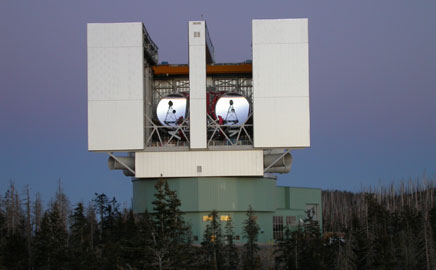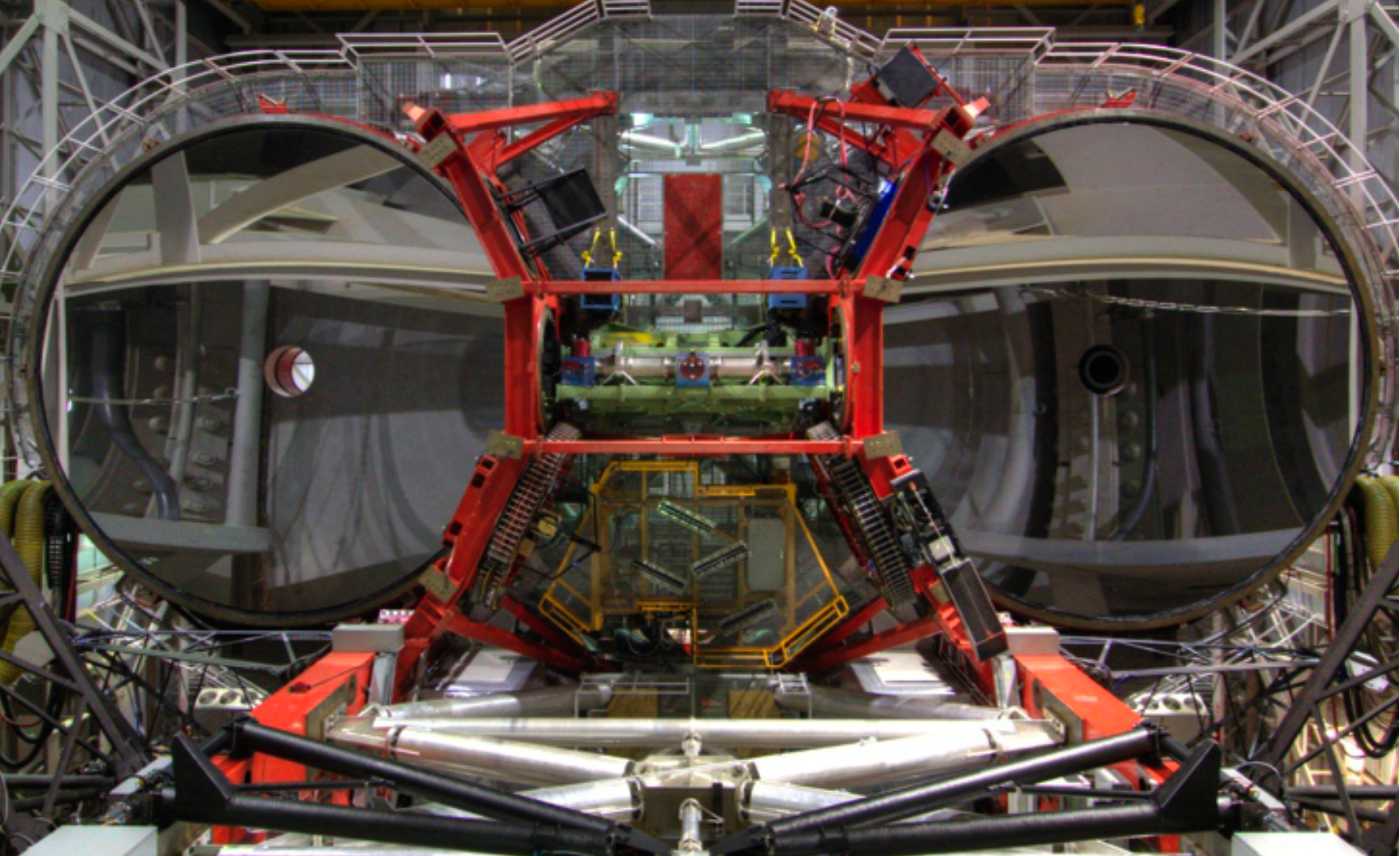
LBT atop Mt. Graham

LBTI instrument (green structure) mounted between the two LBT primary mirrors
The Large Binocular Telescope Interferometer (LBTI) is a NASA-funded instrument to study exoplanetary systems. The LBTI is developed and operated by the University of Arizona. The Exoplanet Exploration Program Office at JPL provides project management oversight. The NExScI provides data archiving and public distribution and project science functions for NASA.
The LBTI is located at the Large Binocular Telescope (LBT, Mount Graham, Arizona). It leverages the high sensitivity enabled by the LBT's two 8 meter telescopes, superb wavefront quality delivered by its adaptive optics systems, low thermal background due to the adaptive secondary architecture, and high angular resolution enabled by the coherent combination of light from the two LBT telescopes (14.4 m center-to-center separation, 23 m maximum baseline).
The LBTI operates at mid-infrared wavelengths: N-band (8-14 microns — NOMIC camera) and L/M-bands (3-5 microns — LMIRCAM camera). It is a versatile instrument with many modes of operation: high contrast direct imaging, coronagraphy, nulling interferometry, Fizeau interferometry, aperture masking interferometry, and spectroscopic capabilities.
The Hunt for Observable Signatures of Terrestrial Systems (HOSTS) is a NASA-funded survey of mid-infrared emission from exozodiacal dust in the habitable zones of nearby main sequence stars, using the LBTI's N-band nulling mode. It's goal is to inform the design of a future space mission to directly detect and characterize exo-Earths. The HOSTS survey will be conducted by a competitively selected Science Team under the leadership of the LBTI Principal Investigator and the NASA Project Scientist.
The LBTI Exoplanet Exozodi Common Hunt (LEECH, Principal Investigator: Andy Skemer, Univ. of Arizona) is a high contrast direct imaging survey of exoplanets around nearby stars. It will be conducted primarily at L-band, thereby providing superior sensitivity to "adolescent" exoplanets; i.e. those around stars that are older than those typically targeted by existing imaging surveys (operating at shorter near-infarred wavelengths). The LEECH includes observations in parallel with HOSTS, thereby directly studying both the exozodi and exoplanet architectures around the same stars.